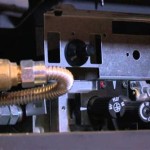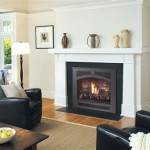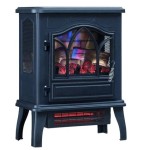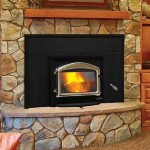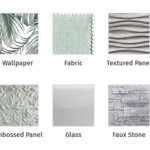Best Ventless Fireplaces: A Comprehensive Guide
Ventless fireplaces, also known as vent-free fireplaces, offer a convenient and aesthetically pleasing alternative to traditional wood-burning or vented gas fireplaces. These units require no chimney or venting system, making them suitable for a wider range of homes and apartments where installing a conventional fireplace is impractical or impossible. While offering ease of installation, understanding the nuances of ventless fireplaces is crucial for making an informed decision. This article provides a comprehensive overview of ventless fireplaces, outlining key considerations, benefits, and factors to consider before purchasing one.
The primary appeal of ventless fireplaces lies in their flexible installation. Without the need for extensive ductwork, they can be placed against walls, integrated into existing furniture, or even used as portable units. This adaptability allows homeowners to add the ambiance of a fireplace to virtually any room. However, it's essential to understand how these fireplaces function and the safety considerations associated with their use.
Ventless fireplaces operate by burning fuel, typically natural gas or liquid propane, and releasing the combustion byproducts directly into the room. This differs significantly from vented fireplaces, which exhaust these gases outside the home. Due to this difference, ventless fireplaces are equipped with oxygen depletion sensors (ODS) that automatically shut off the unit if oxygen levels in the room fall below a safe threshold. This safety feature is paramount to prevent carbon monoxide poisoning.
Key Point 1: Types of Ventless Fireplaces
Understanding the various types of ventless fireplaces is vital for choosing the option that best suits individual needs and preferences. Ventless fireplaces can be broadly categorized based on their fuel source, design, and functionality.
Fuel Type: As mentioned, ventless fireplaces primarily utilize natural gas or liquid propane. Natural gas fireplaces are typically connected to a home's existing natural gas line, offering a continuous and often more cost-effective fuel source. Liquid propane fireplaces, on the other hand, require a propane tank, which can be either portable or connected to a larger supply. While propane tanks provide greater location flexibility, they require periodic refilling and careful storage.
Design: The design of ventless fireplaces varies widely, ranging from traditional fireplace inserts to modern wall-mounted units and freestanding stoves. Ventless fireplace inserts are designed to fit into existing fireplace openings, converting an outdated or unused fireplace into a functional and aesthetically pleasing feature. Wall-mounted units offer a contemporary look and can be easily installed on any suitable wall. Freestanding ventless stoves resemble traditional wood-burning stoves and provide a rustic charm.
Functionality: Some ventless fireplaces offer additional features such as remote control operation, adjustable flame settings, and built-in thermostats. These features enhance convenience and allow for precise temperature control. Certain models also incorporate decorative elements such as artificial logs, ember beds, and realistic flame patterns to mimic the appearance of a traditional fireplace.
Key Point 2: Safety Considerations and Regulations
Safety is the paramount consideration when evaluating ventless fireplaces. While equipped with ODS, adhering to safety guidelines and understanding local regulations is essential for safe operation. Improper use or inadequate ventilation can lead to potential health risks.
Ventilation: Although ventless fireplaces do not require a chimney, adequate ventilation is still necessary. It is imperative to follow the manufacturer's recommendations regarding room size and ventilation requirements. Opening a window slightly while the fireplace is in operation can help ensure adequate air circulation. Avoid using ventless fireplaces in enclosed spaces such as bedrooms or bathrooms, unless specifically approved by the manufacturer.
Carbon Monoxide Detection: Installing a carbon monoxide detector in the vicinity of the ventless fireplace is crucial. Carbon monoxide is a colorless and odorless gas that can be deadly. A functioning carbon monoxide detector provides an early warning in case of a malfunction or inadequate ventilation.
Local Regulations: Before purchasing and installing a ventless fireplace, it is imperative to check local building codes and regulations. Some jurisdictions have strict restrictions on the use of ventless fireplaces, or they may prohibit them altogether. Compliance with local regulations ensures safe and legal operation.
Key Point 3: Advantages and Disadvantages of Ventless Fireplaces
Weighing the advantages and disadvantages of ventless fireplaces is crucial for determining whether they align with individual needs and circumstances. While they offer convenience and aesthetic appeal, they also present certain limitations.
Advantages: The primary advantage of ventless fireplaces is their ease of installation. The absence of venting requirements significantly reduces installation costs and allows for greater flexibility in placement. They also offer high heating efficiency, as the heat generated is directly released into the room, unlike vented fireplaces, where some heat is lost through the chimney. These fireplaces are generally more affordable than traditional fireplaces, both in terms of initial purchase price and installation costs. Lastly, ventless fireplaces are aesthetically pleasing, offering a wide range of designs and styles to complement various home décor.
Disadvantages: The primary disadvantage lies in the potential for indoor air quality concerns. As combustion byproducts are released directly into the room, proper ventilation is essential to prevent the buildup of harmful gases. Some individuals may experience allergic reactions or respiratory irritation from the combustion byproducts. The heat produced by ventless fireplaces may also be less consistent than that of vented fireplaces, as the heat output is dependent on the size of the unit and fuel consumption. Finally, some individuals may find the appearance of ventless fireplace flames less realistic than those of vented or wood-burning fireplaces.
In summary, selecting the best ventless fireplace involves careful consideration of fuel type, design, safety requirements, and local regulations. Understanding the advantages and disadvantages allows for an informed decision, ensuring safe operation and satisfaction with the chosen heating solution.
:max_bytes(150000):strip_icc()/ventless-gas-fireplaces-4160746-hero-f9d4bdcd9bd446eb84406de306f790ba.jpg?strip=all)
How To Pick Out A Ventless Gas Fireplace

The Best Indoor Ventless Fireplaces For Your Home Or Apartment

Considering A Ventless Gas Fireplace Here S What You Need To Know Bob Vila

Considering A Ventless Gas Fireplace Here S What You Need To Know Bob Vila

Ventless Fireplaces What You Need To Know

Top 6 Ventless Gas Log Sets Woodlanddirect Com

Procom Universal Ventless Firebox 170016 The Home Depot

The Best Gas Fireplaces Of 2024 Direct Learning Center

Duluth Forge Dual Fuel Ventless Gas Fireplace 26 000 Btu T Stat Control Antique White Finish 170130 The Home Depot

Duluth Forge Dual Fuel Ventless Gas Fireplace 32 000 Btu Remote Control Antique White Finish Com
Related Posts

